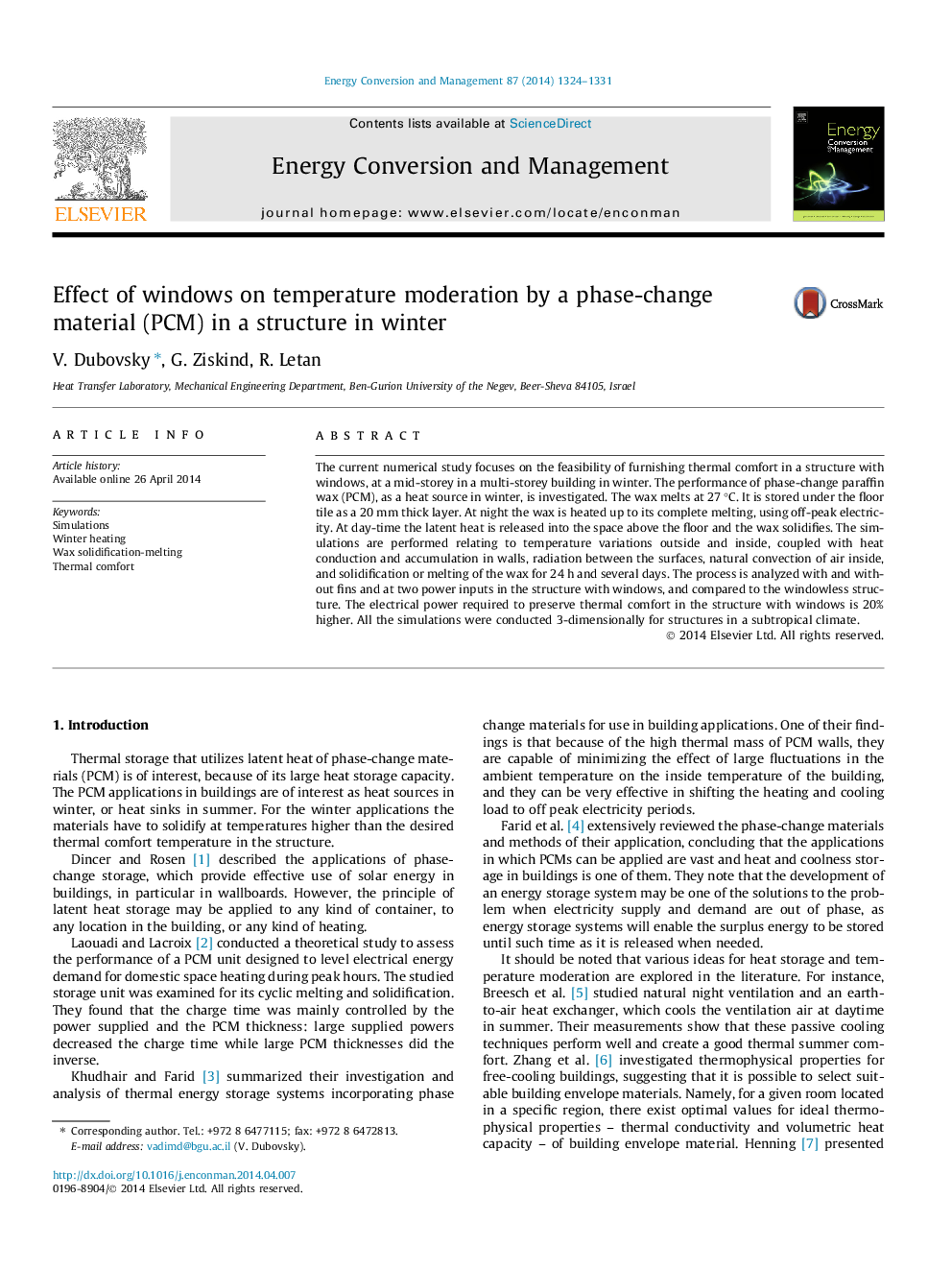| Article ID | Journal | Published Year | Pages | File Type |
|---|---|---|---|---|
| 760655 | Energy Conversion and Management | 2014 | 8 Pages |
•Temperature is moderated by a phase-change material in an apartment in winter.•The study is numerical, conducted 3-dimensionally.•All the simulations are referred to a subtropical climate.•The study illustrates the effect of windows upon heat losses.•The electrical consumption due to windows is 20% higher.
The current numerical study focuses on the feasibility of furnishing thermal comfort in a structure with windows, at a mid-storey in a multi-storey building in winter. The performance of phase-change paraffin wax (PCM), as a heat source in winter, is investigated. The wax melts at 27 °C. It is stored under the floor tile as a 20 mm thick layer. At night the wax is heated up to its complete melting, using off-peak electricity. At day-time the latent heat is released into the space above the floor and the wax solidifies. The simulations are performed relating to temperature variations outside and inside, coupled with heat conduction and accumulation in walls, radiation between the surfaces, natural convection of air inside, and solidification or melting of the wax for 24 h and several days. The process is analyzed with and without fins and at two power inputs in the structure with windows, and compared to the windowless structure. The electrical power required to preserve thermal comfort in the structure with windows is 20% higher. All the simulations were conducted 3-dimensionally for structures in a subtropical climate.
